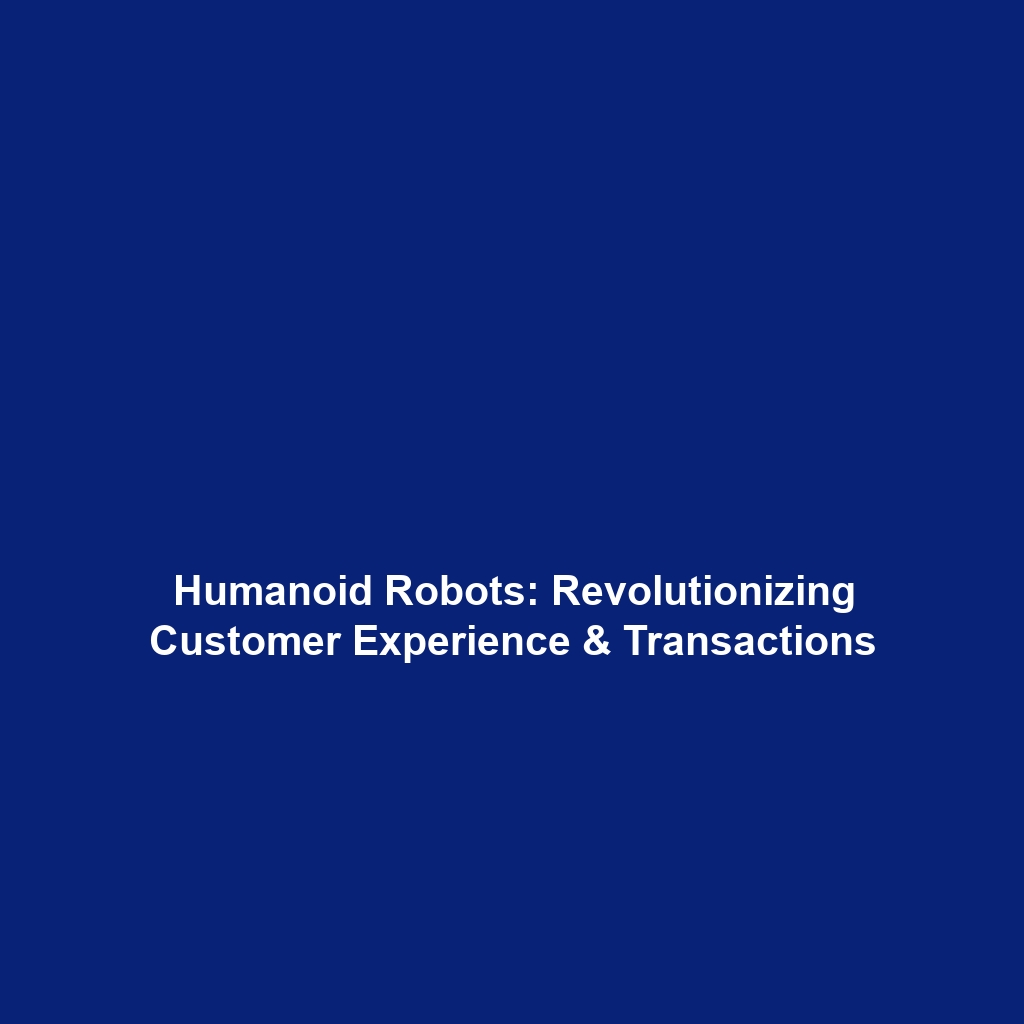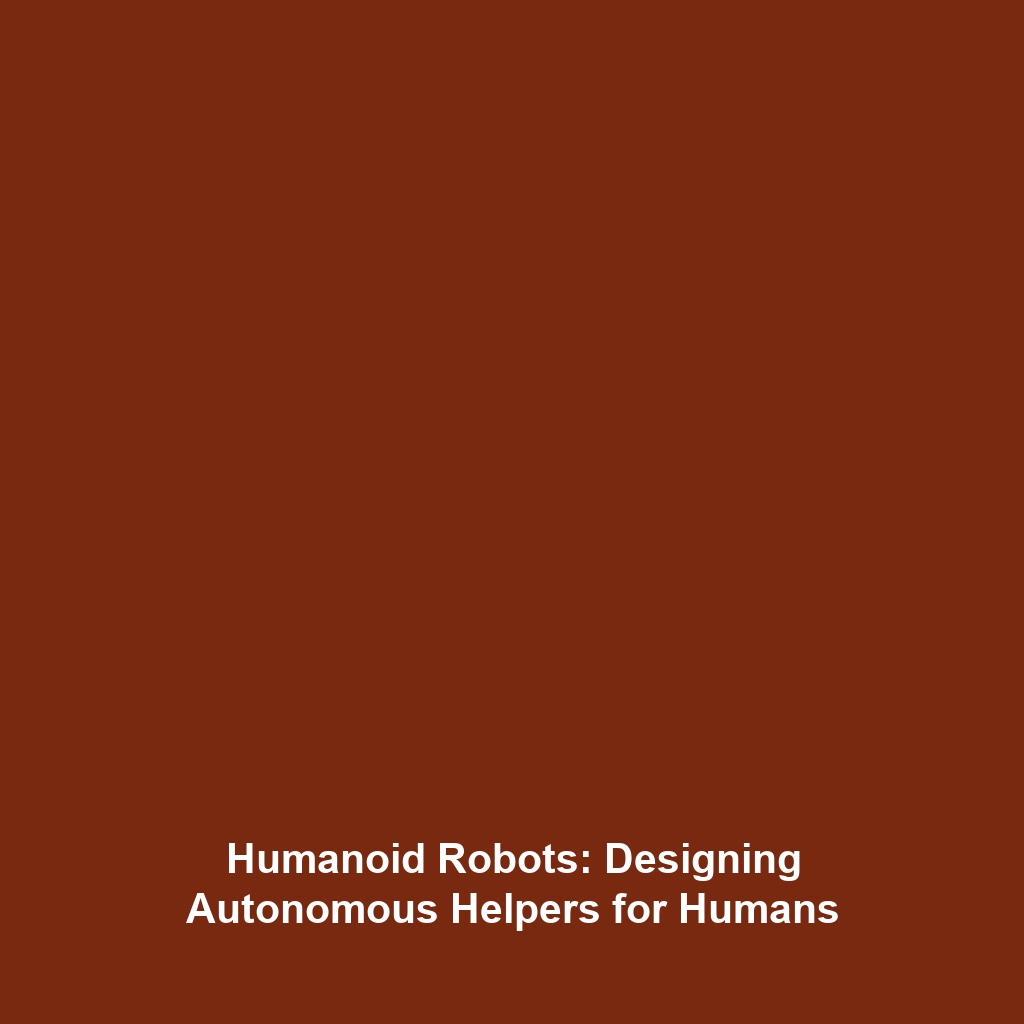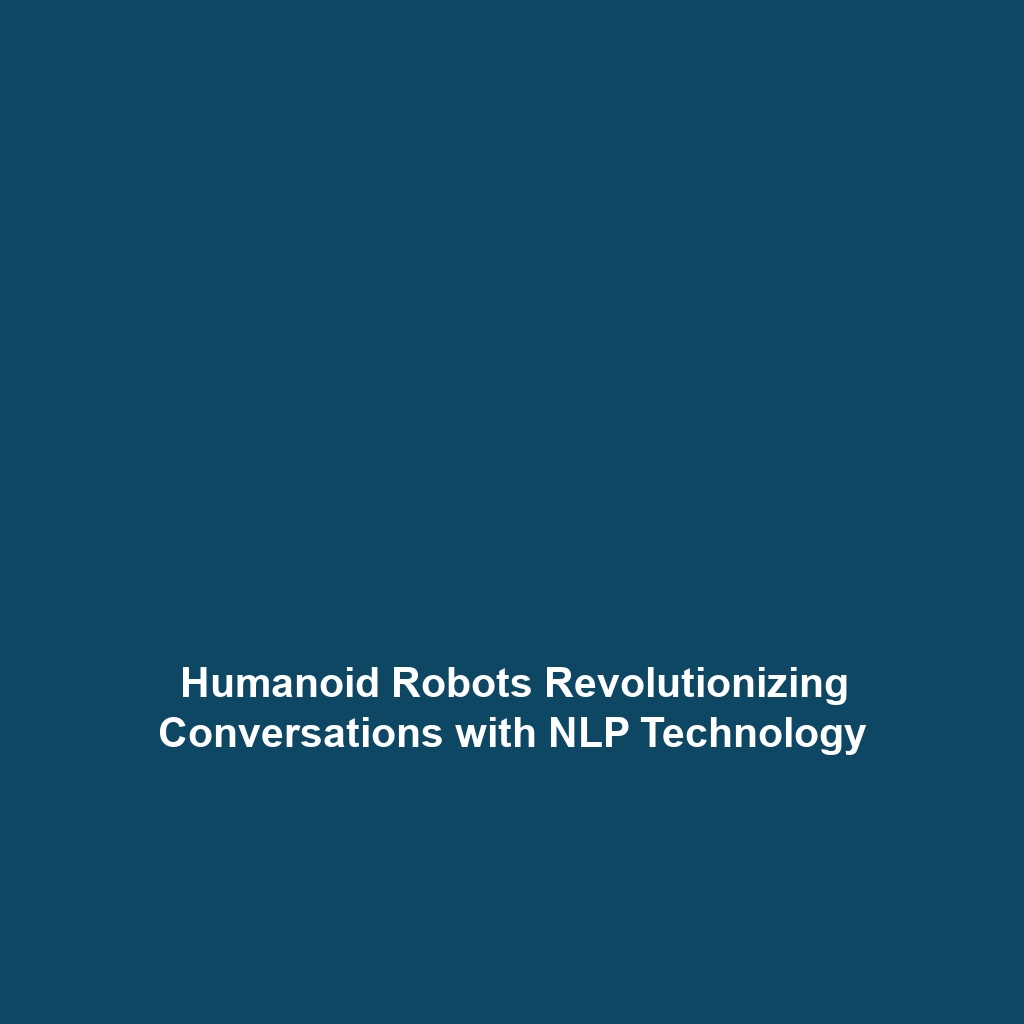Key Features of Humanoid Robots: Anatomy and Capabilities
Introduction
The evolution of humanoid robots has become a significant aspect of modern robotics, highlighting vital key features that enhance their anatomy and capabilities. Understanding these features is crucial, as they enable humanoid robots to perform tasks ranging from simple interactions to complex surgeries. This article explores the anatomy and capabilities of humanoid robots, their applications, challenges faced in their development, and future innovations, showcasing their importance in today’s tech-driven world.
Key Concepts
Several major concepts underpin the key features of humanoid robots. These concepts include:
- Human-like Structure: The anatomy of humanoid robots typically mimics human form, with a head, torso, arms, and legs, designed to facilitate interactions in human environments.
- Advanced Mobility: Capabilities like walking, running, and climbing are influenced by robotic joints and actuators that replicate human motion.
- Artificial Intelligence: Machine learning and perceptual capabilities allow humanoid robots to understand and respond to their surroundings effectively.
- Human-Robot Interaction (HRI): Combining natural language processing and emotional recognition makes interactions more intuitive, enhancing usability.
Applications and Real-World Uses
The applications of key features of humanoid robots extend across various sectors, illustrating how these robots are utilized in practical scenarios. Notable applications include:
- Healthcare Assistance: Humanoid robots are being used to assist in surgeries and provide care for the elderly, demonstrating their capabilities in sensitive environments.
- Education and Training: In educational settings, humanoid robots serve as interactive tools, helping students engage with educational content effectively.
- Customer Service: Many businesses deploy humanoid robots to enhance customer service experiences, using them to greet and assist customers in retail environments.
Current Challenges
While humanoid robots hold great promise, several challenges must be addressed, including:
- Technical Limitations: The complexity of human-like movements and emotions presents significant technical hurdles.
- Cost Factors: High development and production costs can limit the widespread adoption of humanoid robots.
- Ethical Issues: Concerns around privacy, job displacement, and user acceptance pose ethical challenges that need consideration.
Future Research and Innovations
Future research in humanoid robots is poised to make significant advancements that will enhance their anatomy and capabilities. Key areas of innovation include:
- Improved AI Algorithms: Next-generation AI will enable more advanced decision-making and learning from human interactions.
- Enhanced Mobility Solutions: Research in biomechanics could lead to more fluid and natural movements.
- Energy Efficiency: Innovations in power sources will enable longer operational times, making humanoid robots more effective in their roles.
Conclusion
In summary, the key features of humanoid robots, including their anatomy and capabilities, significantly contribute to their potential across various industries. As technology advances, overcoming current challenges and leveraging future innovations will be essential for the further development of humanoid robots. For readers interested in learning more about humanoid robots and their implications, we invite you to explore our other articles on Applications of Robotics and Future Innovations in AI.









